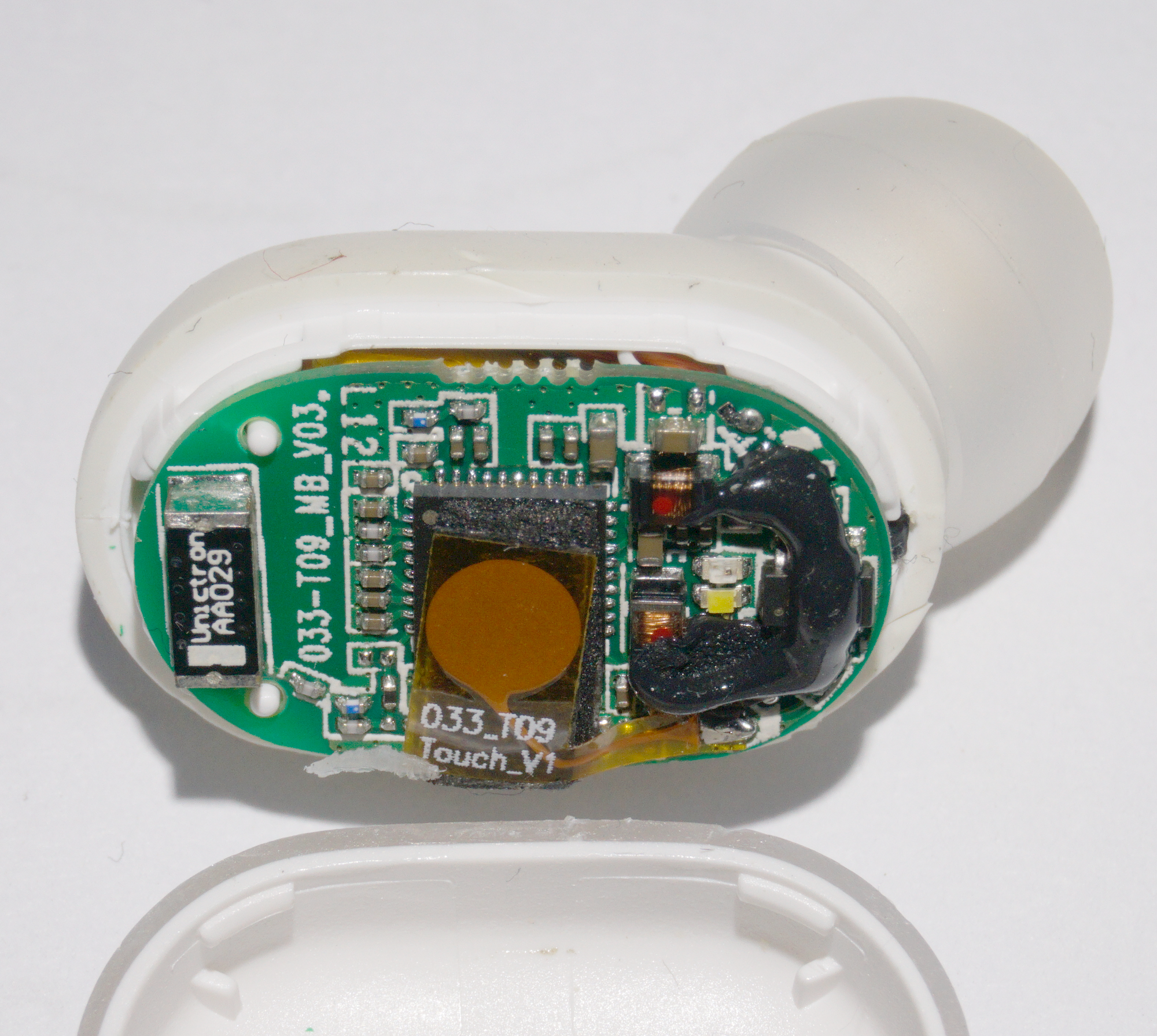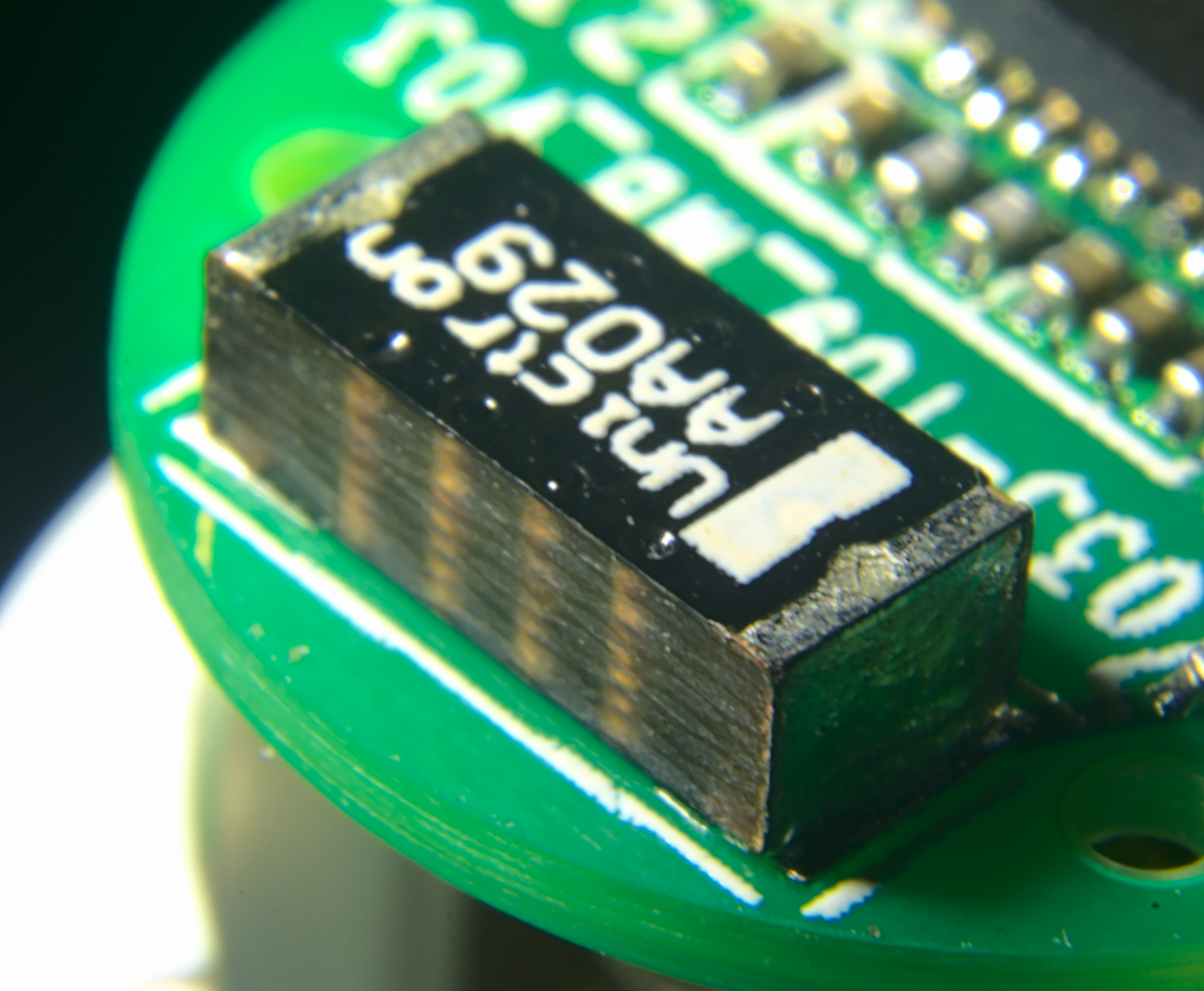Introduction
I got my hands on a pair of wireless Bluetooth headphones. So far I have made several 2.4 GHz antennas that were supposed to work in close contact with the human body, but I was wondering how the Chinese solved it.
First pair
About the headphones
| Manufacturer | iHip |
| Model | BT VOYAGE |
| PCB marking | 9889-6963A_V10 |
| SoC marking | BP03618-63A4 |
Teardown
Below are photos of the handset with its interior and a close-up of the PCB.


The antenna in these headphones is a magnetic loop antenna. You can see a typical application and parameters of a similar ceramic magnetic loop antenna in the TAOGLAS WLA.01 antenna datasheet on the manufacturer webpage or pdf.
From my experiments with magnetic loop antennas I can say that they are more immune to detuning due to near field changes then ceramic monopole antennas. But their gain is smaller compared to other designs. Especially with such a small ground area as on this PCB.
Unfortunately, I was not able to find any information about the IC responsible for all the functions of these headphones - speaker driver, microphone amplifier, DAC, ADC, battery protection, battery charging, Bluetooth radio - which is impressive for a single SoC.
Second pair
About the headphones
| Manufacturer | Xiaomi |
| Model | Mi True Wireless Earbuds - TWSEJ02LM |
| PCB marking | 033-T09_MB_V03. |
| SoC marking | RTL8763BFR |
Teardown
Below is the photo of the main PCB

The antenna used in these headphones is a type of monopole antenna marked AA029 manufactured by Unictron. Datasheet can be found on the manufacturer web page under this link. I think it is an interesting design because the antenna is made entirely of multi-layer PCB, which can be seen in the close-up. The photo shows the individual layers of the laminate and the perpendicular translucent vias.
